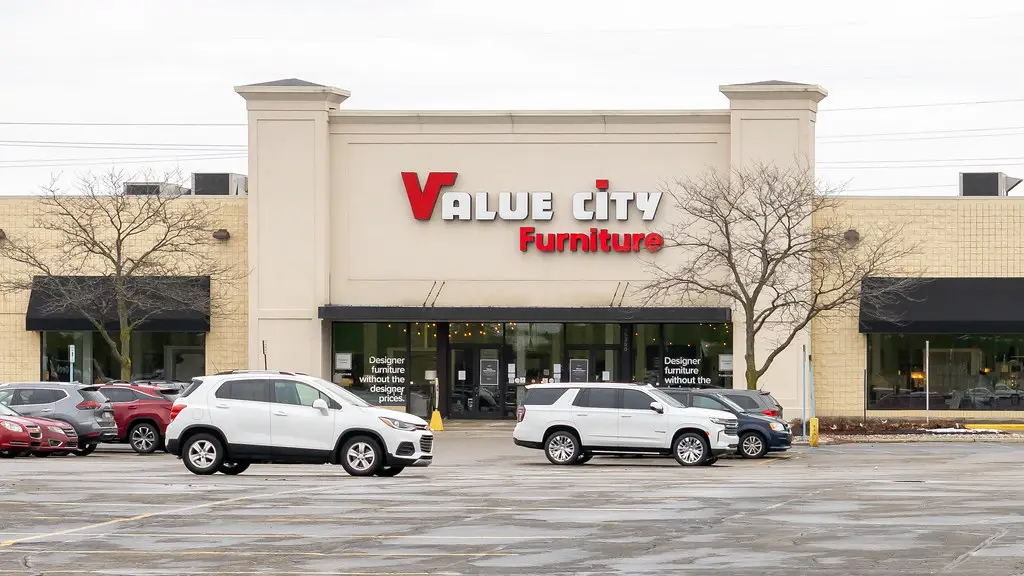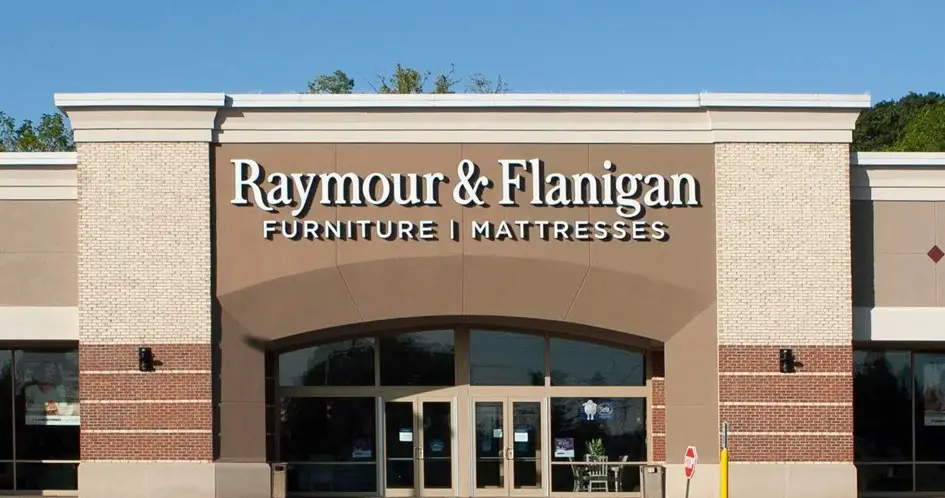The furniture retail industry is facing turbulent times in 2025, with several well-known chains struggling to keep their doors open. From bankruptcy filings to widespread store closures, a mix of rising costs, shifting consumer habits, and online competition is putting pressure on even the most established names. As shopping patterns continue to evolve, these once-popular furniture stores are finding it harder than ever to stay afloat.
1. Pier 1 Imports

Despite attempts to modernize and restructure after declaring bankruptcy in 2020, Pier 1 Imports has continued to struggle. The brand’s reliance on niche, boho-inspired home décor has failed to keep up with shifting consumer preferences and competition from more versatile retailers. While Pier 1 has transitioned to an online-only model, it has struggled to recapture its former customer base.
As noted by Forbes, Pier 1’s limited product range and higher price points have made it difficult to compete with budget-friendly chains like IKEA and online giants like Amazon. With declining brand recognition and limited marketing efforts, Pier 1 faces an uncertain future in 2025.
2. Rooms To Go

Rooms To Go, a staple for affordable furniture, has struggled to attract younger consumers who prioritize sustainability and unique designs. The chain’s “room package” deals, once a key selling point, are now seen as outdated in an era where personalization is highly valued.
According to Retail Dive, supply chain issues and rising material costs have also affected Rooms To Go’s ability to maintain competitive pricing. Without significant innovation or diversification, the brand risks losing relevance in a rapidly evolving market.
3. Ashley Furniture

Although Ashley Furniture remains a well-known name, the chain has faced increasing criticism for inconsistent product quality and poor customer service. Complaints about delayed deliveries and defective items have tarnished its reputation, especially as consumers turn to more reliable online options.
As highlighted by Consumer Affairs, the rise of direct-to-consumer furniture brands like Article and Joybird has created tough competition for Ashley Furniture. Unless the chain addresses its quality and service issues, it may continue to lose market share in 2025.
4. Value City Furniture

Value City Furniture, known for its budget-friendly offerings, has struggled to compete with online furniture retailers offering similar products at lower prices. The brand’s reliance on brick-and-mortar stores has made it difficult to adapt to the growing preference for online shopping.
According to Business Insider, Value City’s outdated store layouts and limited product customization options have further contributed to declining sales. Without significant investment in e-commerce and modernized marketing strategies, the chain may continue to struggle in 2025.
5. Bob’s Discount Furniture

While Bob’s Discount Furniture has built a loyal customer base by offering low prices, its reliance on volume sales has made it vulnerable to rising production costs and supply chain delays. The chain has also faced criticism for limited design options and lower-quality materials, which have hurt its appeal among more discerning buyers.
As reported by Furniture Today, Bob’s may need to focus on improving product durability and expanding its design offerings to remain competitive. Without these changes, the chain risks losing customers to online competitors with better reviews and faster delivery times.
6. American Signature Furniture

American Signature Furniture, the parent company of Value City Furniture, is facing similar challenges in retaining relevance. The brand’s focus on mid-range furniture with limited customization has struggled to resonate with modern buyers who seek unique, high-quality pieces.
American Signature’s reliance on traditional retail locations has further hindered its ability to compete with online-only brands. Without a significant shift in strategy, the chain may continue to see store closures in 2025.
7. La-Z-Boy

La-Z-Boy, once a household name for its iconic recliners, has struggled to maintain relevance among younger consumers. The brand’s traditional designs and reliance on bulky furniture have failed to appeal to those seeking sleek, minimalist aesthetics. Additionally, supply chain disruptions have caused delays in production, frustrating customers.
La-Z-Boy’s challenges stem from its inability to adapt to modern tastes and its relatively high price points compared to online competitors. To survive in 2025, the brand may need to focus on redesigning its product line and investing in more efficient manufacturing and delivery processes.
8. The Dump Furniture Outlet

The Dump Furniture Outlet, known for offering clearance and overstock furniture, has faced difficulties in attracting consistent foot traffic. While the concept of discounted luxury furniture was once appealing, buyers now have a wealth of online options for affordable, high-quality pieces without the hassle of visiting a warehouse.
The Dump’s reliance on in-person sales and its limited online presence have hindered its ability to compete in today’s digital-first retail environment. Unless the chain prioritizes e-commerce and customer convenience, it may struggle to stay afloat in 2025.
9. Crate & Barrel

Crate & Barrel, known for its upscale furniture and home décor, is grappling with rising competition from mid-range retailers and online marketplaces. While the brand offers stylish designs, its premium pricing has become a barrier for younger buyers and budget-conscious shoppers.
Crate & Barrel’s challenges include adapting to changing consumer expectations for faster delivery and more affordable options. Without significant efforts to modernize its product offerings and pricing strategies, the chain may face further declines in sales.
10. Ethan Allen

Ethan Allen, synonymous with traditional, high-end furniture, has struggled to appeal to younger buyers who favor contemporary and mid-century modern styles. The brand’s classic aesthetic and premium pricing have made it difficult to compete with direct-to-consumer brands offering customizable, affordable furniture.
Ethan Allen has faced challenges in maintaining its high-end appeal while adapting to shifting market trends. To stay competitive, the brand will need to diversify its product offerings and invest in digital marketing to attract a new generation of buyers.
11. Havertys

Havertys, a regional furniture chain with a strong presence in the Southeast, has struggled to expand its appeal beyond its core markets. The chain’s traditional designs and limited customization options have failed to resonate with modern buyers seeking more unique and versatile furniture.
Havertys has also faced challenges with rising operational costs and supply chain delays, which have impacted its ability to maintain competitive pricing. Without significant updates to its product line and online presence, Havertys risks losing market share in 2025.
12. Slumberland Furniture

Slumberland Furniture, a Midwest-based chain, has struggled to compete with larger national retailers and online furniture brands. The chain’s focus on affordable, practical furniture has made it difficult to stand out in a crowded market, especially as consumers prioritize style and sustainability.
Slumberland’s challenges include limited brand recognition outside of its core regions and a lack of innovation in its product offerings. Expanding its online presence and updating its designs could help the chain stay relevant in an increasingly competitive market.
13. Raymour & Flanigan

Raymour & Flanigan, a Northeast-based furniture chain, has faced challenges in keeping up with consumer expectations for affordability and convenience. The chain’s reliance on in-store sales and its higher price points have made it less competitive compared to online retailers offering faster delivery and better deals.
Raymour & Flanigan’s limited product variety and outdated marketing strategies have further hindered its growth. To remain competitive in 2025, the brand will need to invest in e-commerce and focus on offering more flexible financing options to attract budget-conscious buyers.
14. Art Van Furniture

Art Van Furniture, once a dominant name in the Midwest, has struggled to recover after filing for bankruptcy in 2020. While some stores have reopened under new ownership, the brand’s reputation has been damaged by its abrupt closures and liquidation sales. Buyers are hesitant to trust the brand, and its product offerings have failed to stand out in a competitive market.
Art Van’s lack of innovation and reliance on outdated business practices have made it difficult to regain its footing. Without significant changes to its operations and product line, the brand’s future remains uncertain in 2025.
